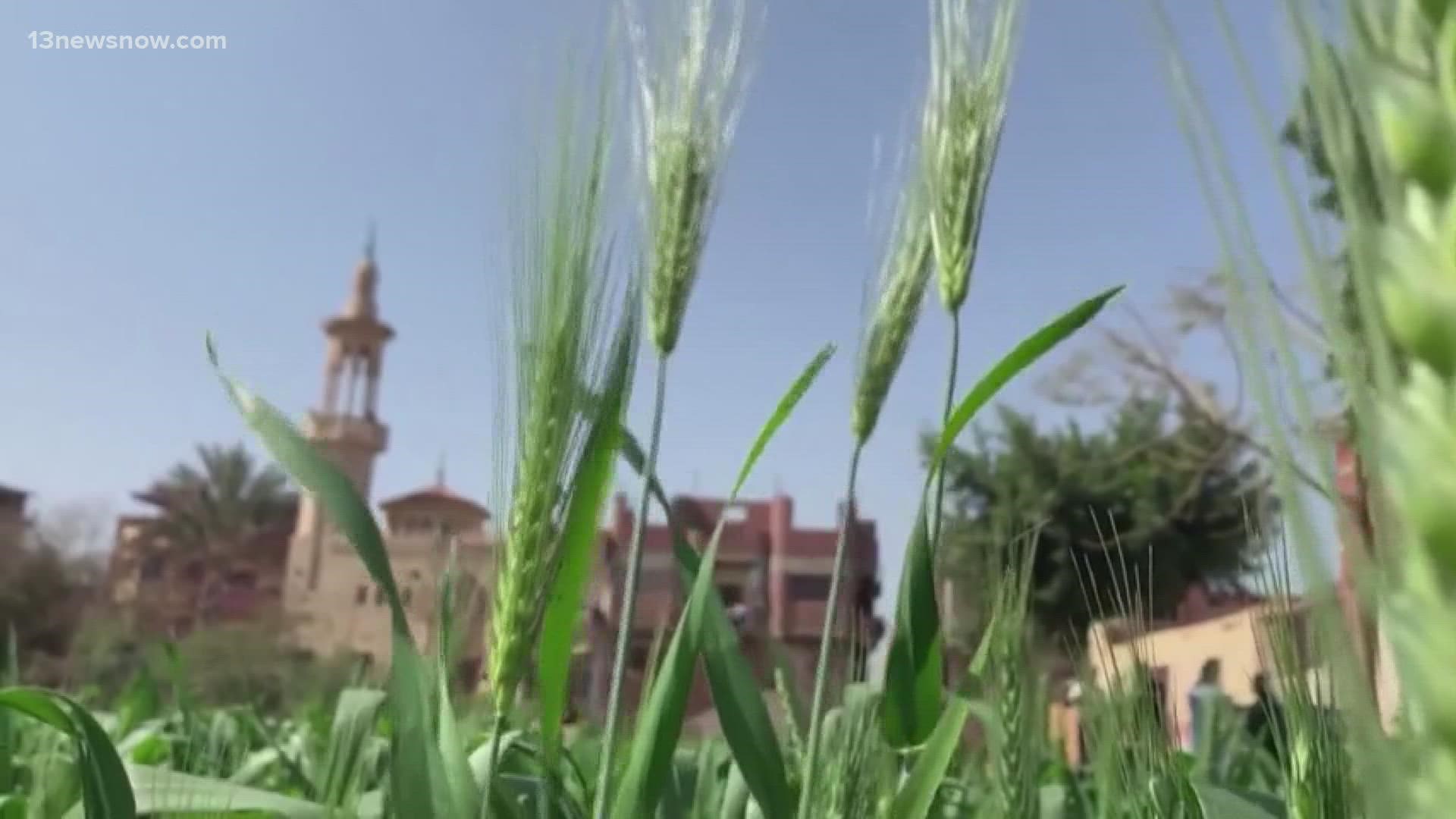NORFOLK, Va. — Most people would be hard-pressed to find anything that didn't cost a little extra these days.
But on top of already rising inflation rates, the Russian invasion into Ukraine drove up the price of a common commodity consumed by many across the United States.
“If you disrupt that supply chain out in the global markets, the global markets have less of a pool of wheat to find elsewhere, and that triggers a bidding war," said Peter Shaw, a professor of business administration for Tidewater Community College.
The cost of wheat has skyrocketed in the last several weeks. According to macrotrends.net, the price per bushel of wheat is almost $13, which is over $4 more than a month ago.
Since Russia and Ukraine are key exporters and contributors to the global wheat supply, the price for the grain has increased as the rest of the world tries to make up the difference.
“If that chunk from Ukraine disappears, now everybody who is buying from them is shopping around the world trying to find more and more wheat. That can trigger what we call a demand-pull inflation," Shaw said.
Nasdaq defines demand-pull inflation as a price increase due to increased aggregate demand, the amount of goods and services the entire population buys.
Shaw explained that the higher price for raw, agricultural materials can have a spillover effect at the local level for consumers and shoppers, in a dilemma called cost-push inflation.
That's when the supply of goods or services is limited in some way but demand remains the same, causing prices to go up, according to Nasdaq.
"If all of a sudden it skyrockets, it folds into production process. What happens is that cost rolls into the cost of production, and it becomes a cost increase to the consumer. The cost is pushing their way through the manufacturing process," Shaw said.
This comes at a time when inflation rates are already high for necessities like food, gasoline and more.
The latest Consumer Price Index from January listed food inflation rates at 7% over the last 12 months. In total, the average inflation rate is 7.5%, the highest 12 month stretch since 1982.
Shaw also named rising fuel prices as another contributing factor to the rising price of agricultural commodities like wheat.

